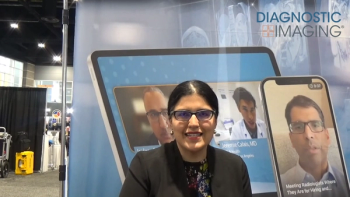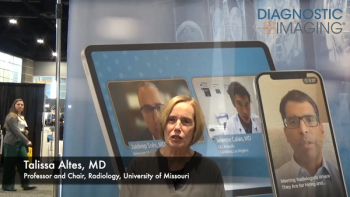
E-Med returns to teleradiology focuswith restructuring of PACS project
Karlak leaves company in executive reshufflingPACS developer E-Systems Medical Electronics has been forced tomodify its aspiration to be a full-scale PACS player, at leastfor the time being. The San Antonio, TX, company last week underwenta
Karlak leaves company in executive reshuffling
PACS developer E-Systems Medical Electronics has been forced tomodify its aspiration to be a full-scale PACS player, at leastfor the time being. The San Antonio, TX, company last week underwenta restructuring that saw the company transfer responsibility fordeveloping its new PACS product line to another E-Systems division.The move will enable E-Med to concentrate exclusively on teleradiology,which has historically been the company's strong suit.
The changes also included the departure of chief executiveJames Karlak, who was head of Image Data when that company wasacquired by E-Systems. Other E-Med executives to leave the companyin recent weeks include Larry Ware and David Salazar (SCAN 6/19/96).E-Med CFO David Plemons, an E-Systems veteran, has been namedacting chief executive while the company looks for a replacementfor Karlak.
E-Med was formed in 1994 to include the consolidated operationsof Image Data and Advanced Video Products, which E-Systems boughtin 1994 and 1992, respectively. Both companies had strong positionsin the teleradiology market and hoped to transfer that successto the PACS field.
The plan was to take AVP's PACSPro/DX product, a DOS-basednon-DICOM system, and port it to the more powerful Unix platformwhile adding support for the DICOM standard. That effort provedto be more difficult than E-Med had planned and became a drainon E-Med's resources, according to Donald Alvarez, an Image Dataveteran who was named E-Med's director of sales, marketing, andproduct development as part of last week's restructuring.
"The effort that it would take was underestimated,"Alvarez said.
Development of the Unix-based version of PACSPro has been shiftedto another E-Systems unit based in Garland, TX. The Garland divisionhas broad experience developing high-technology communicationssystems for E-Systems' defense contracting business, and willbe able to apply its resources to finishing the project. Whenthe Unix-based version of PACSPro has been completed, Garlandwill return the product to E-Med for marketing, Alvarez said.
"E-Systems figured it would be better to take on the primaryresponsibility for developing the system and to take that responsibilityphysically up to Garland, where all of the systems integrationexpertise, personnel, and facilities are, so they can concentrateon it and move it ahead quickly," Alvarez said.
In the meantime, E-Med will focus on selling teleradiologyand advanced teleradiology networking products, as well as PACScomponents like its MegaScan monitor line. E-Med will continueto support the DOS-based PACSPro installations, of which thereare about a dozen. In addition, E-Med has ended its direct saleseffort in favor of the independent sales representatives on whichit has relied since its Image Data days.
Despite the company's PACS R&D difficulties, its new teleradiology-onlystrategy should prove a winner. For the most part, E-Med has maintainedthe teleradiology position built by AVP and Image Data, accordingto Alvarez. The company is now able to concentrate on a marketin which it has a proven track record and a large installed base.
"We continue to have a very healthy revenue stream,"Alvarez said. "One of the best assets we have is a huge customerbase."
Newsletter
Stay at the forefront of radiology with the Diagnostic Imaging newsletter, delivering the latest news, clinical insights, and imaging advancements for today’s radiologists.




























